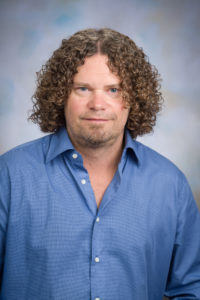When CSU lost its first academic building to fire on May 8, 1970, it had been a tumultuous week, to say the least.
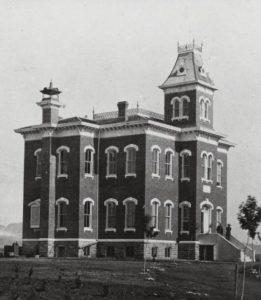
Former U.S. President Richard Nixon had just announced the U.S. invasion of Cambodia, sparking protests at college campuses around the country. One of those was Kent State University, where four students were killed and nine others wounded by National Guard soldiers on May 4.
In the days following Kent State, many CSU students went on strike, skipping class on Thursday, May 7, and Friday, May 8. According to news reports at the time, about 2,000 students attended a concert/debate at the South College Gym that Friday night and voted to continue the strike the coming Monday. As the event was winding down, just before 11 p.m., Donald Banks of the CSU Police Department reported smoke coming from Old Main, the University’s first significant building (a “claim shanty” had been built several years before Old Main opened in 1879).
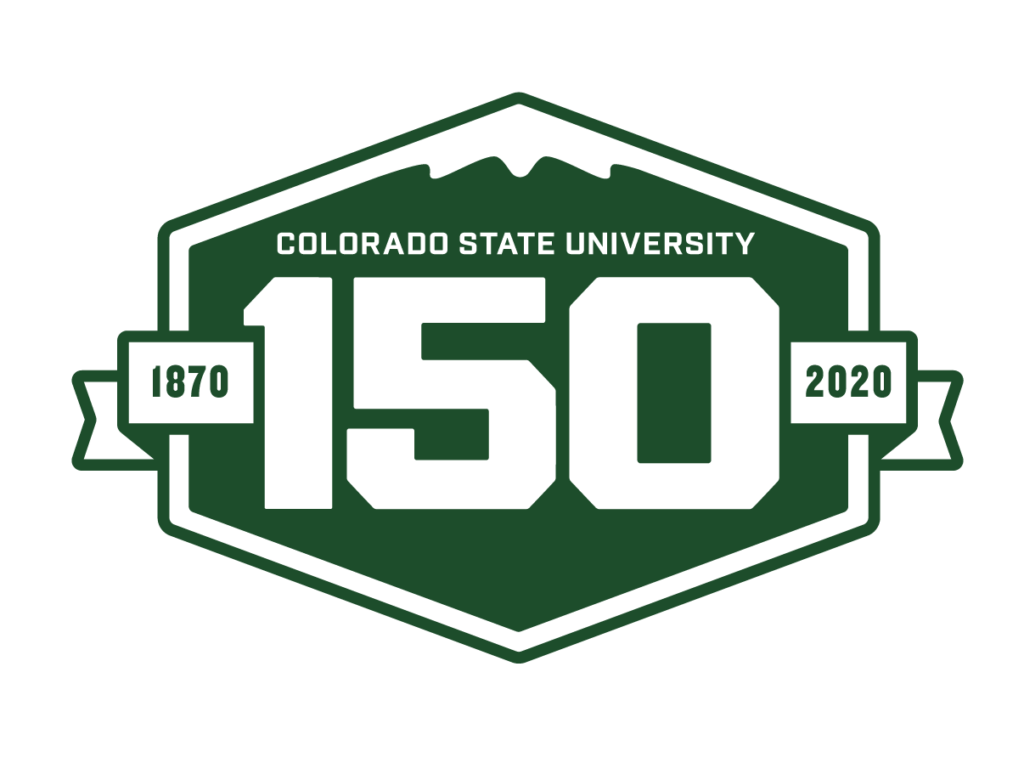
This is part of a series of monthly stories about some of the things uncovered by film producer Frank Boring, who is poring over CSU’s film archives as he works on a documentary about the University’s history in honor of its 150th anniversary. For more stories, an interactive photo slider and a quiz on CSU lore, visit csu150.colostate.edu.
But by the time firefighters arrived, the blaze was out of control, and there was neither enough water nor water pressure to douse it because it was near the end of a main water line. By morning, the stately building where CSU’s roots were initially laid more than 90 years before was a complete loss.
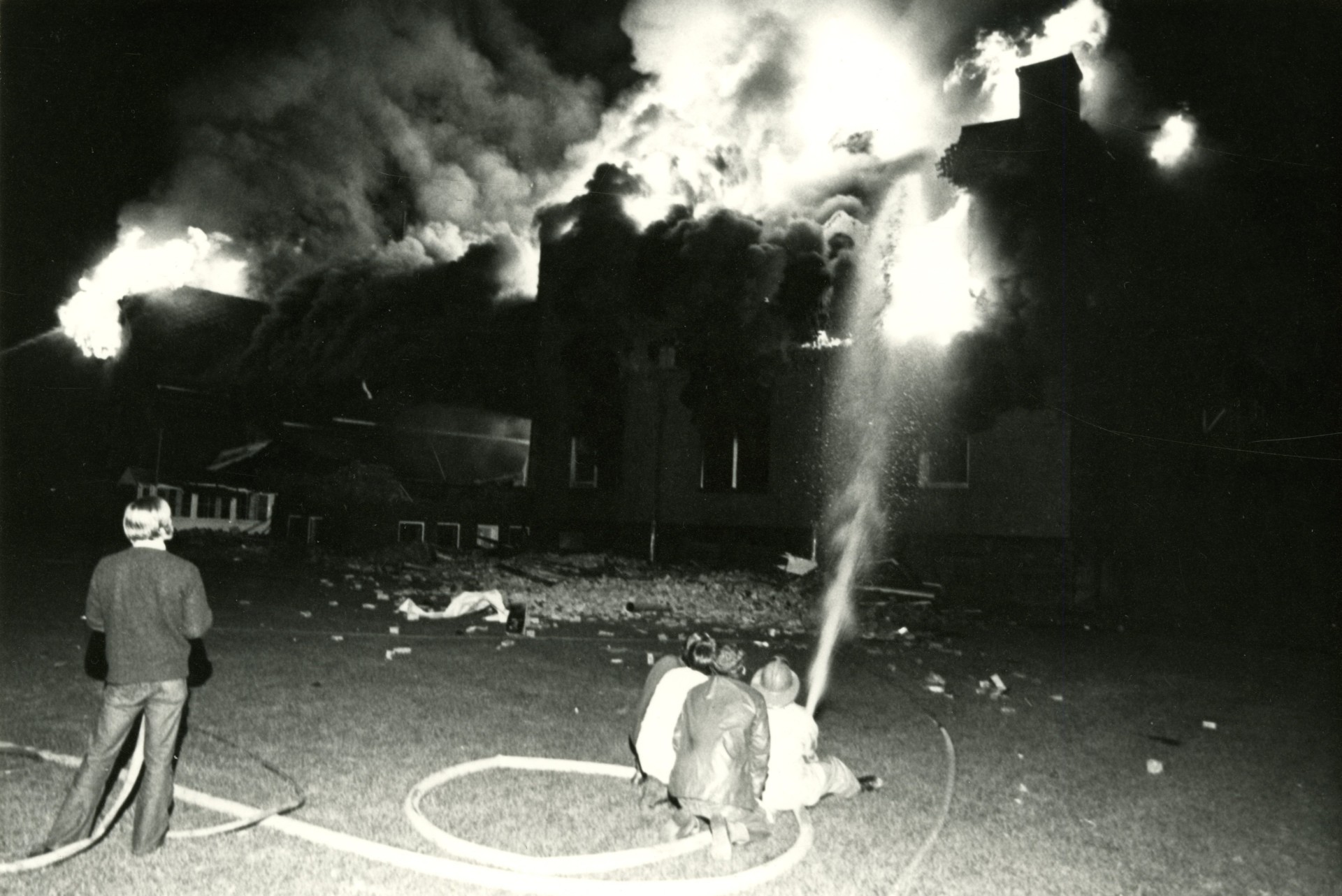
Photo courtesy of Chris Wolf, emergency management specialist for the City of Fort Collins
“Within a few hours countless remnants of the institution’s past had totally disappeared. Gone was the Board Room where President Elijah E. Edwards and the State Board of Agriculture painstakingly discussed the first courses of study, agricultural experiments, and farmers’ institutes. Gone was the gymnasium which accommodated the girls championship basketball team of 1903 and early social events, such as the Junior Prom. Gone was the auditorium where for many years the entire College gathered for daily assemblies and whose stage was graced by William Jennings Bryan, Billy Sunday, John Phillip Sousa, and R.J. Wattles’ Drama Club. Gone was Room 301 where Willard Eddy exposed hundreds of students to provocative issues of humanistic learning. Gone were the traces of myriad footsteps, worn into stairs or covered by paint, imprinted by people who contributed immeasurably to the institution’s growth — people such as Charles Ingersoll, Louis Carpenter, Eliza Routt, S. Arthur Johnson, Charles Shepardson, Margaret Durward, and Charles A. Lory.” — James Hansen, Democracy’s College in the Centennial State: A History of Colorado State University
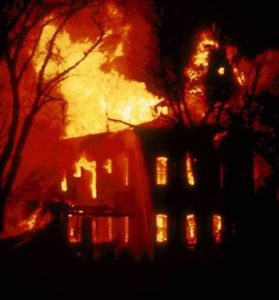
Sesquicentennial documentary
Footage of the fire, and the smoldering aftermath, will be included in the documentary that film producer Frank Boring is creating for the University’s 150th birthday this spring. In addition to the clip above from CSU’s Special Collections in the Morgan Library, Boring and audiovisual presentation specialist Bryan Rayburn have received footage from the Poudre Fire Authority showing the fire from a different angle, and they are in the process of digitizing it.
Authorities declared the fire a work of arson. According to the book History of the Fort Collins Fire Department written by the late Ed Yonker, the fire chief at the time, the blaze originated from six different areas in Old Main. In addition, Yonker wrote, there were arson attempts at two other campus buildings that night. They included the ROTC firing range building, where authorities found a makeshift Molotov cocktail, but both fires were contained before any significant damage was done. According to the May 10 Rocky Mountain Collegian, CSU students rallied to protect other buildings on campus that night, deploying student marshals who donned white armbands. The Coloradoan reported in subsequent days that investigators found evidence that upper floors of Old Main had been soaked with flammable liquid.
No one was ever charged with a crime, and some say the burning remains the University’s greatest mystery.
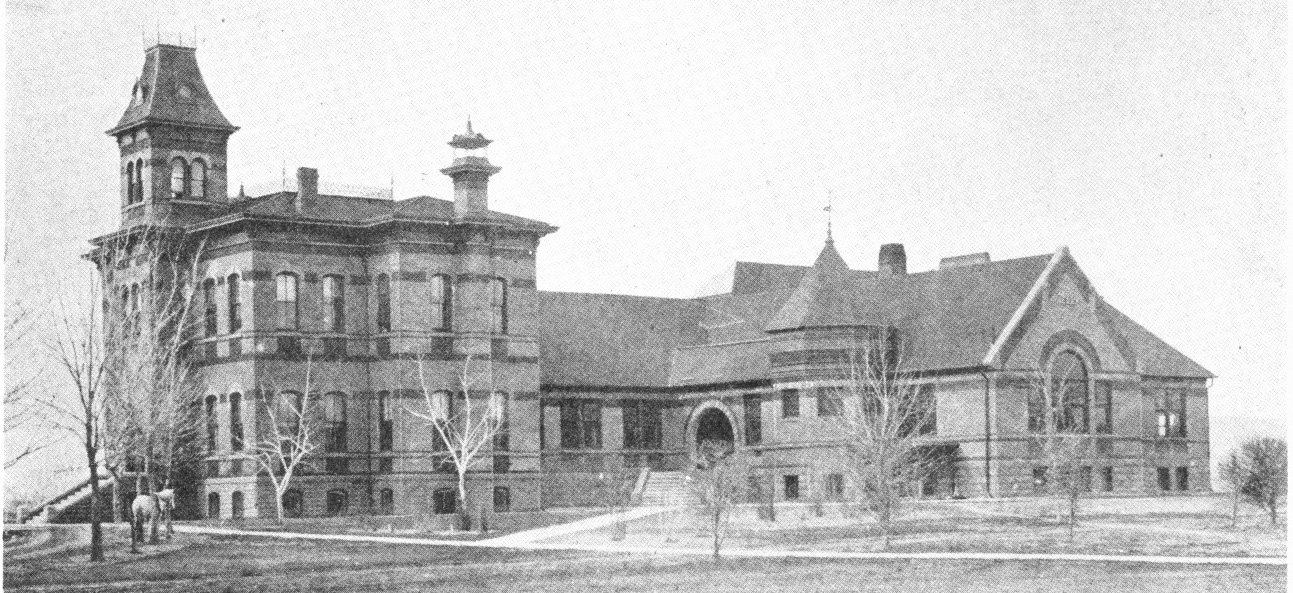
Old Main and its additions as they appeared in 1891. University Archives and Special Collections
At the time, anti-war protesters and even then CSU President A.R. Chamberlain questioned the notion that it was the work of the student activists. A May 10 editorial signed by the staff of the Rocky Mountain Collegian said the fire was likely started by “outside agitators who wanted to try and make our peaceful, nonviolent demonstration into a polarization between the students themselves and the community.”
When asked for his opinion on who committed the act, Chamberlain suggested that it was “a former student or some out-of-community person trying to ride on the back of our peace-oriented strike,” according to the May 10 Coloradoan. And yet others in the Fort Collins community suspected it was the work of a more extreme element of the anti-war activists.
The fire also had a profound impact on the campus atmosphere. Some who were CSU students at the time said the conflagration had a sobering effect – people were shocked that such a thing could happen at CSU, and the tenor of activism on campus after the incident became much more muted.
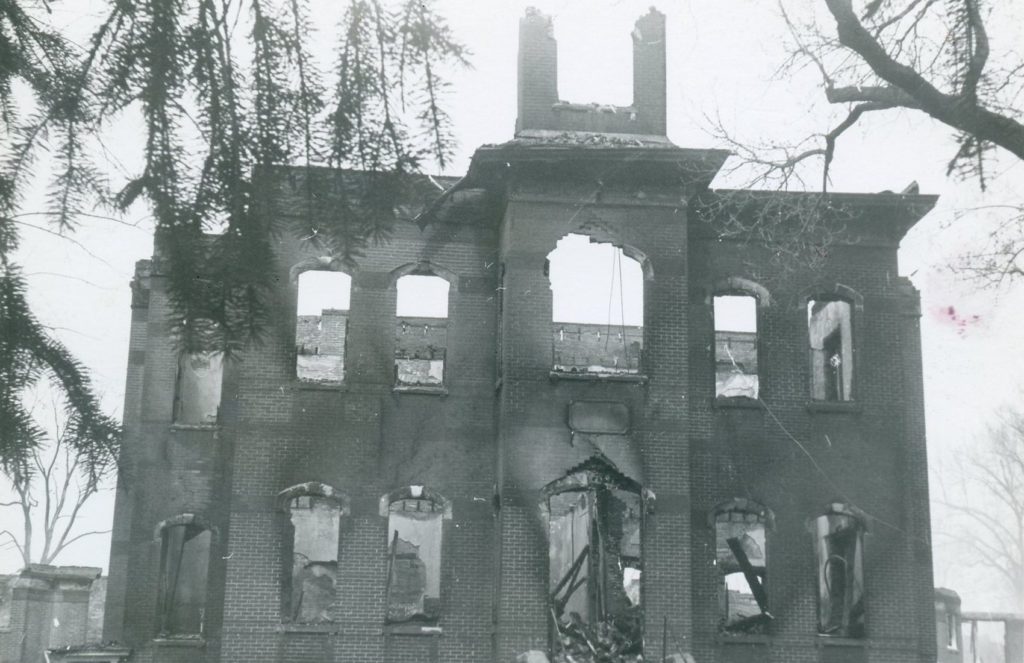
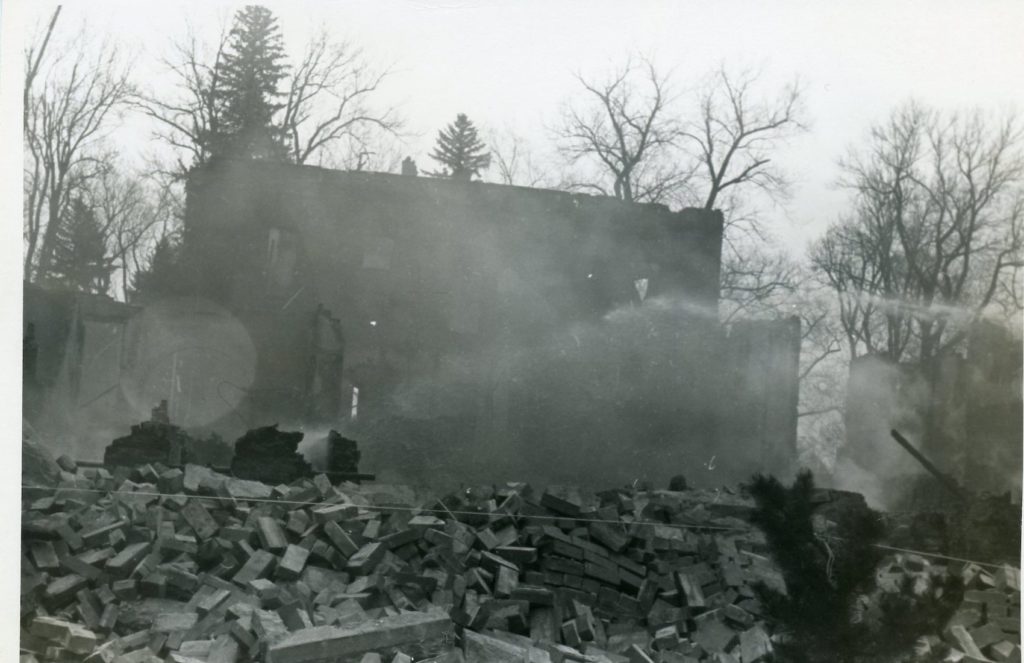
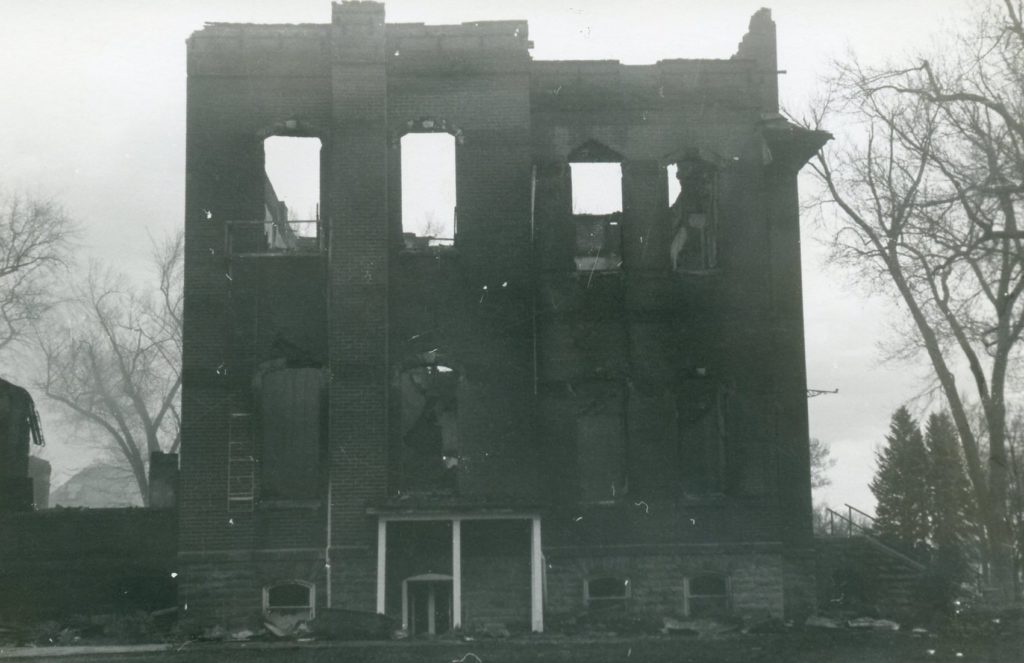
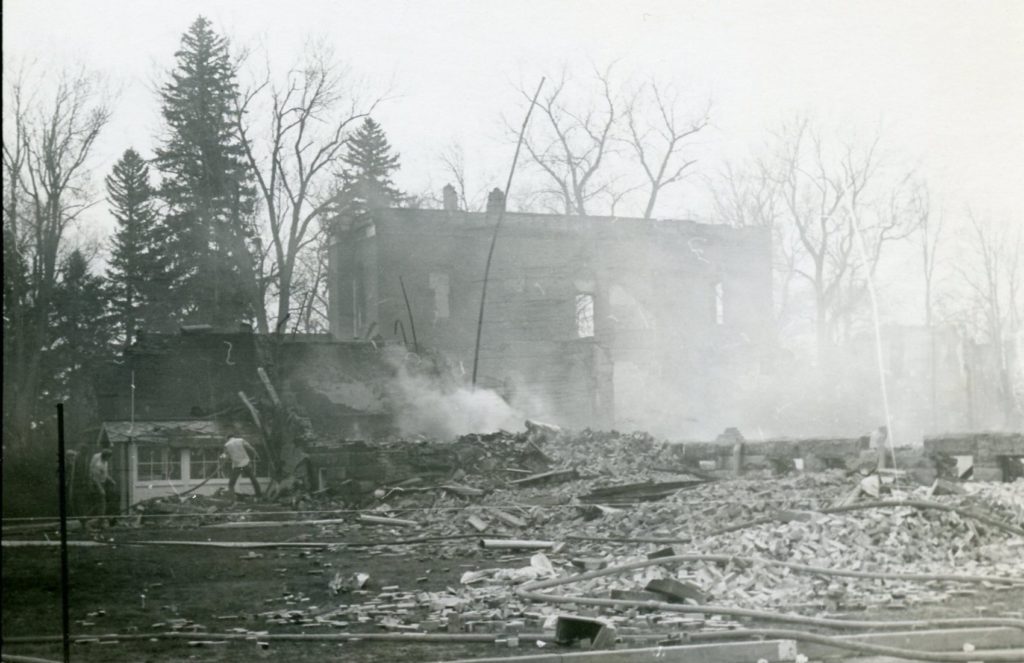
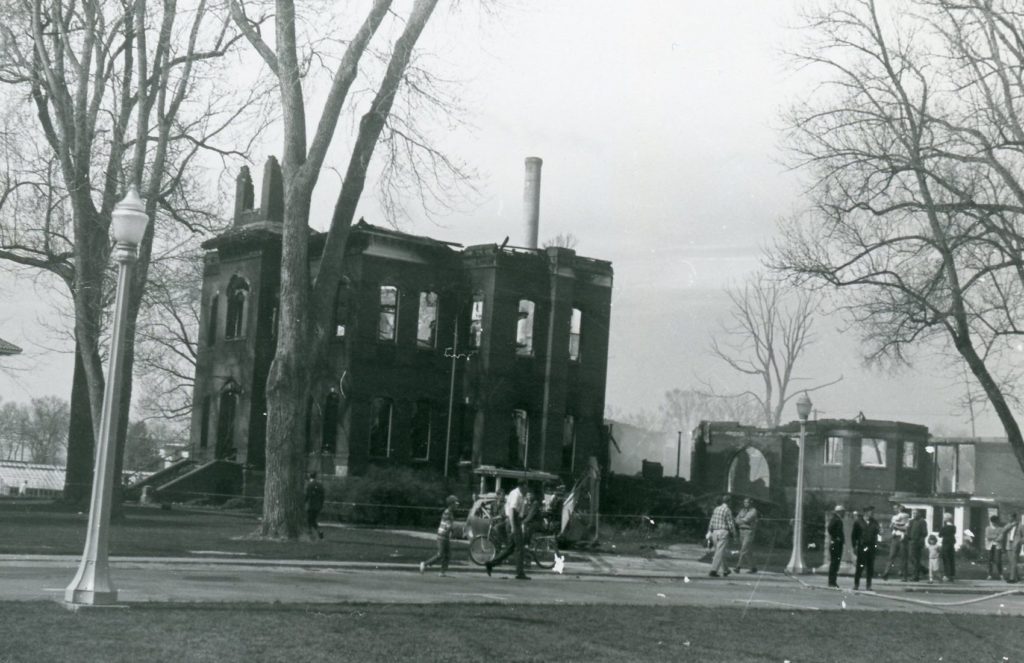
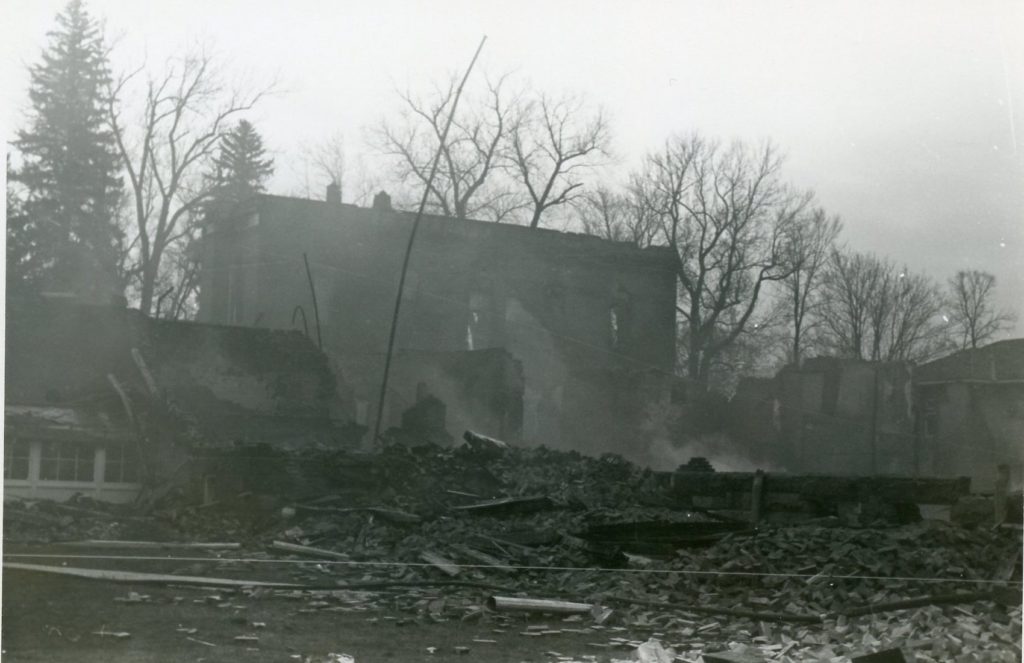
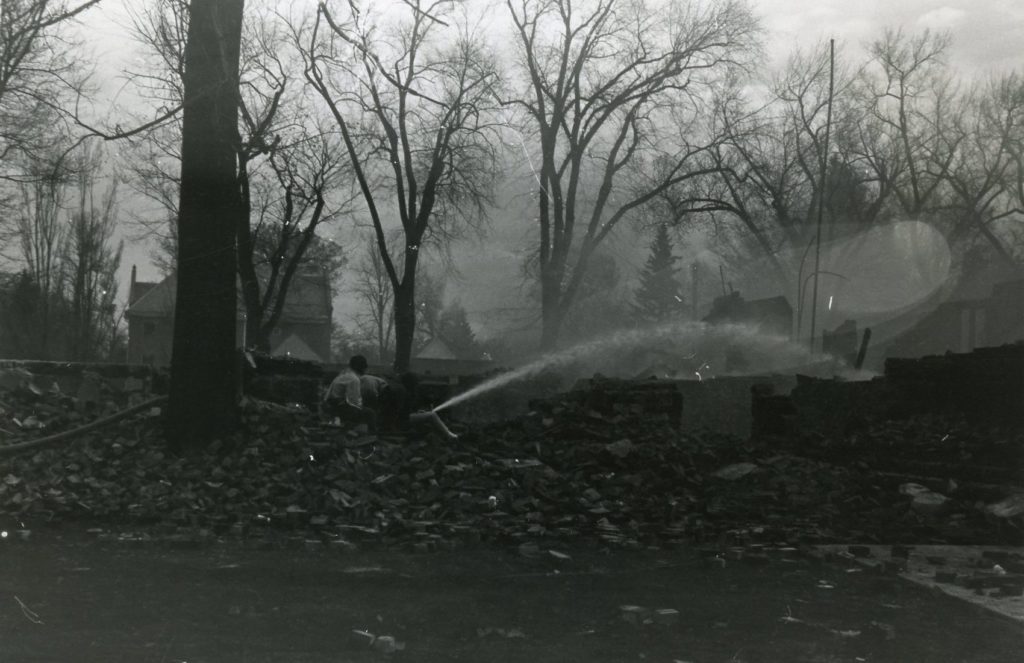
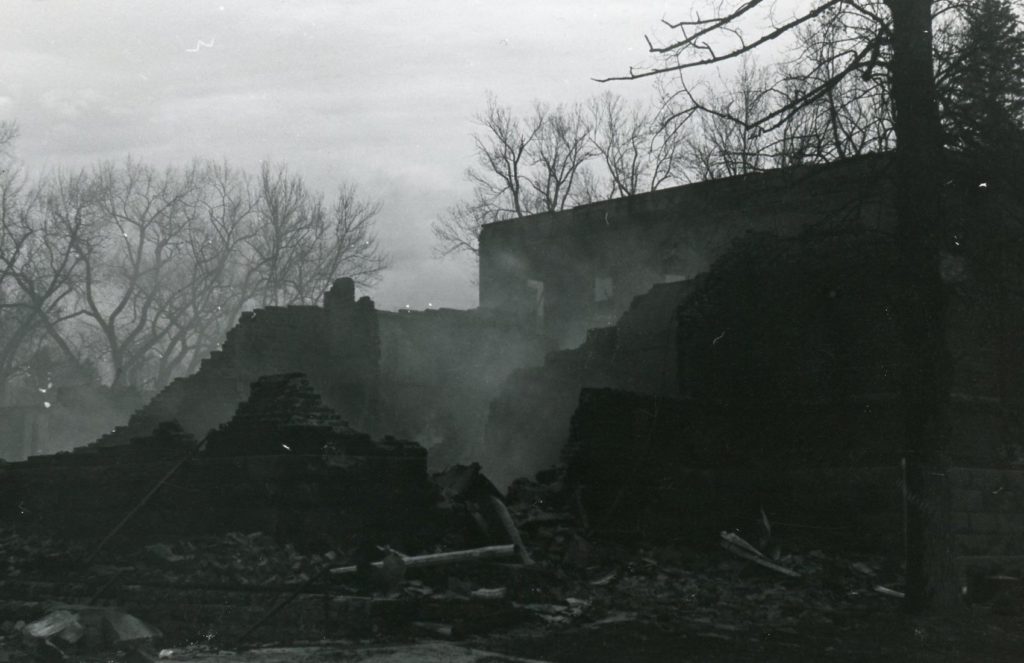
Photos courtesy of Chris Wolf, emergency management specialist for the City of Fort Collins
‘Too close to home’
Vice President for Diversity Mary Ontiveros was a freshman at CSU when the fire erupted. She had attended the event at the South College Gym and had walked past Old Main just minutes before the fire began, on her way back to her residence hall. She recalls seeing fire trucks speed past her as she walked west on Laurel Street, as they headed toward the fire. Then she watched the structure burn from her ninth-floor room in Durward Hall.
“It seemed like all of Fort Collins was burning; the blaze was just amazing,” she recalls. “And after that, it was as though things were hitting too close to home. There was the fear of the unknown, of who caused it. It’s one thing to express your views, but damaging property like that, the idea that people could have been hurt, all made us feel like it had become bigger than us.”
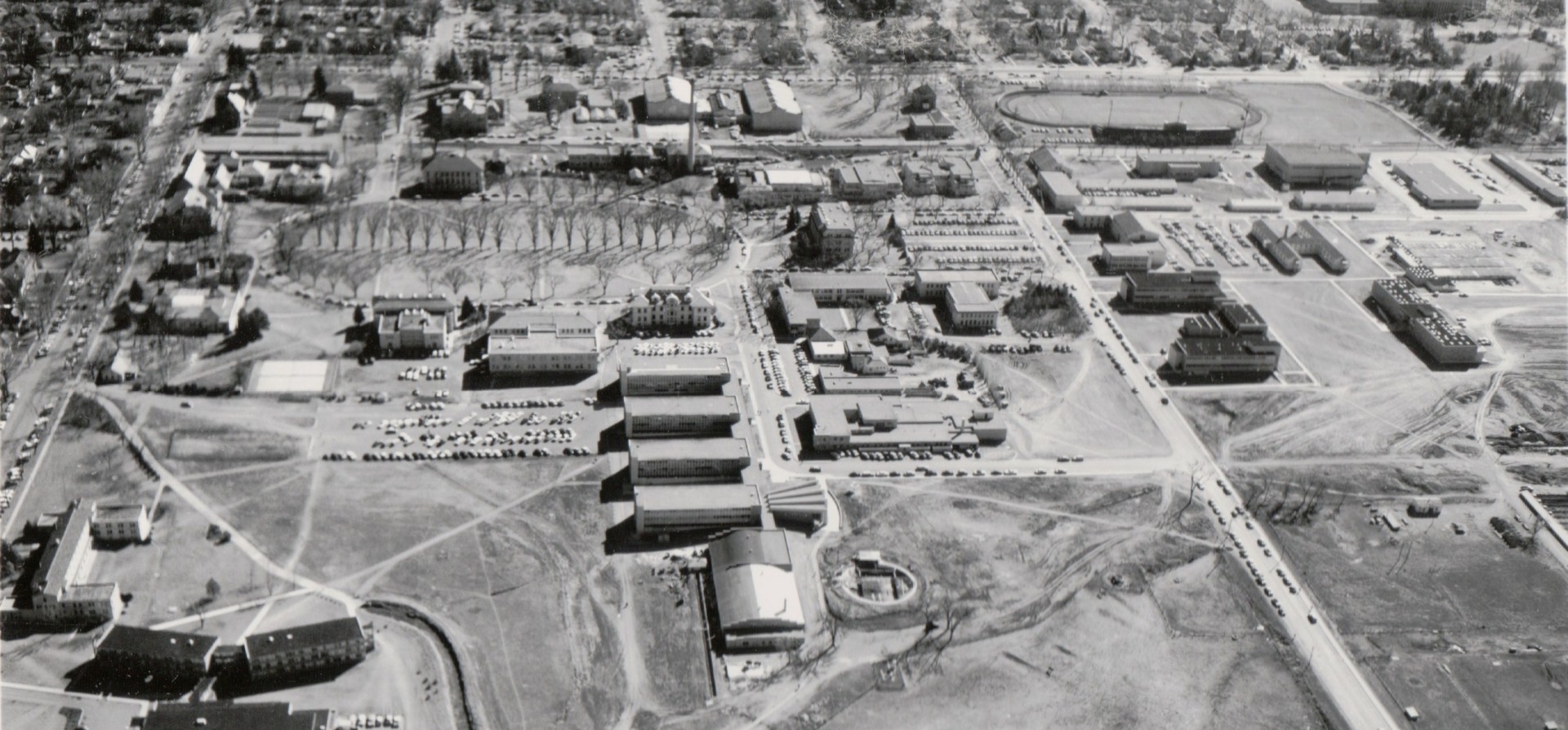
In the aerial campus photo above from 1960, the Old Main complex can be seen in the upper left, south of Spruce Hall and east of the Occupational Therapy Building, near the current location of Lot 330.
She said one theory at the time was that the fire was set not by anti-war activists, but by those who opposed the protesters. And Chief Investigator Gene Erwin of the CSU Police Department was quoted in the Coloradoan as suggesting that it could have been outsiders: “We know that several nonstudent members of radical groups were in town Friday night.” Regardless of who started the blaze, the art supplies, refinishing compounds and other flammables in Old Main’s basement made the job easier. The CSUPD’s records of the fire investigation were lost in the 1997 flood on campus.
David McKelfresh, executive director of assessment and research in the Division of Student Affairs, was also a freshman at the time. He recalls seeing a glow from the third floor of Ingersoll Hall, so he rushed over to the Oval, and the area around Old Main was blocked off. McKelfresh agreed that the fire seemed to put a damper on the protests and gatherings that had been held on campus that week.
“Tensions had been high on campus, but after the fire there was a remorseful, empty feeling,” he says. “We couldn’t believe this had happened.”
Behind Reel CSU Stories
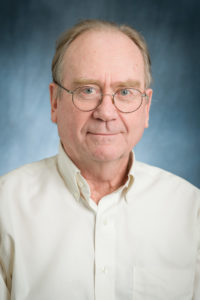
This is part of a series about the stories uncovered by film producer Frank Boring and audiovisual presentation specialist Bryan Rayburn, who are going through CSU’s film archives to compile a documentary about the University’s first 150 years. For more stories, an interactive photo slider and a quiz on CSU lore, visit csu150.colostate.edu. For an in-depth look at how the colleges of CSU have carried on the land-grant mission through the decades, go to source.colostate.edu/csu-150/.
